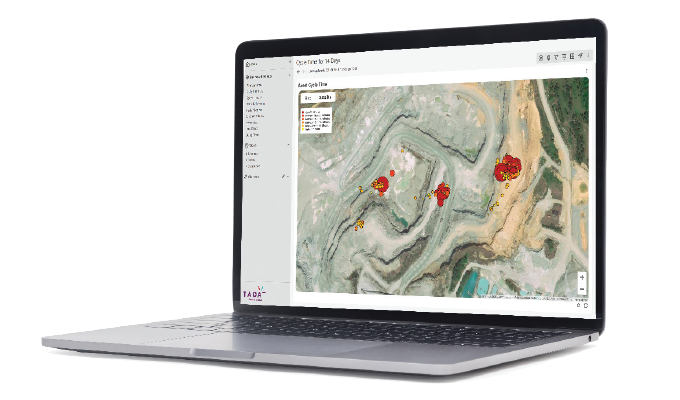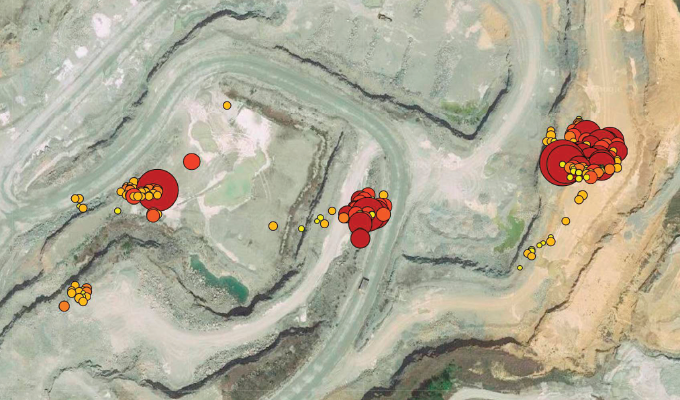By Karen M. Scally
By now, it is clear the pandemic has accelerated almost every aspect of digital adaptation for businesses in order to survive.
Jason Threewitts, digital services manager for Carter Machinery, a Caterpillar dealer located in Salem, Virginia, believes that shift could have the most dramatic impact on the construction industry, particularly in the adoption and application of telematics solutions.
Threewitts says the pandemic is forcing contractors to depend on connected fleet data now more than ever before, during this time when access and visibility to fleets and jobsites have been limited.
“It’s very relevant, especially now when you think, how are you going to get hours off of that machine, but you’re not allowed to go to that machine,” Threewitts says. “And your depreciation on the books doesn’t stop because of COVID-19. Customers are realizing, especially within the last 6 months, that being able to be at the site without being at the site has all new meaning here.”
Threewitts helps contractors become more proactive with their equipment data through the assistance of his team at Carter Machinery, which serves customers in Delaware, Maryland, Virginia, and the panhandle and southern regions of West Virginia. He says the construction industry was on the cusp of a significant transition in embracing the benefits of a digitally connected fleet—and the pandemic is simply serving as the tool to push that turning point.
RISING VALUE OF TELEMATICS
As the scales tip in favor of connected fleets, Threewitts says contractors are increasingly wanting to understand the value of the data beyond tracking hours and location for their heavy equipment.
Because Carter Machinery covers a territory with diverse customers—including miners with 50 machines in their fleet to landscapers with just a skid steer and a small excavator—it would be natural to think their needs would be varied as well. But Threewitts says that would be wrong.
“I would challenge that and say they both have the same problems—the size and scope of the problems changes,” he says.
He guides contractors into making more proactive decisions by helping them understand how their construction equipment telematics data can assist with tracking and trending load monitoring and preventive maintenance (PM) to achieve significant cost savings.
“I always like to ask customers questions like, ‘How often do you get your PMs done on time?’”
Threewitts shares, “They’ll quickly say, ‘Well, Jason, I thought we were talking about connectivity.’ And I’m like ‘I am talking about connectivity.’ The amount of time and variables and errors that could potentially be in that is high.”
He recognizes that identifying a fleet’s needs and the appropriate solutions, including order parts in advance, to avoid unexpected and expensive downtime is a complete paradigm shift from how most contractors have historically operated.
“Our industry’s been really good at being reactive and Rescue 911 forever,” Threewitts says. “And that’s changing.”

LET DATA DRIVE DECISIONS
Though it may be initially uncomfortable to be confronted with the data’s insights, such as where your organization is losing money or needs to make changes, Threewitts says most fleet owners and equipment managers quickly understand it’s an asset that can be invaluable.
“You get that pulse check every hour of every day,” Threewitts says. “What am I doing, how am I doing it, where am I falling short? Do I need to make a different decision?”
The contractors that decide to learn from the data are starting to use it to drive operator training. For example, by monitoring how an operator loads trucks, the data could reveal the machine should be functioning more efficiently.
“Maybe I need to give [the operator] some training on how to stage trucks and how to set up so he’s not swinging from one side of the machine to the other to load a bucket,” Threewitts says.
The data also opens the doors to provide better solutions and develop closer relationships between client and service provider, he says.
“What we’re doing is we’re consulting with them and helping them leverage what all this data is telling us,” Threewitts says. “I’m here because the data told me to be here.”
CONDITION-BASED MONITORING
Major component budgeting plays a significant role in every heavy equipment contractor’s operation and yet, it’s something that nearly every customer struggles with. The data from the connected fleet now creates the opportunity for enhanced condition-based monitoring.
“So. the idea is I’m making decisions off of the condition, or in this case, the condition is driven by the data,” Threewitts says.
In the past, condition-based monitoring, such as fluid analysis, had its limits.
“You’ve got a critical oil sample that tells you your iron reading in your engine is through the roof,” Threewitts says. “What are you going to do? All right, it’s reactive time. I’m going to order parts.”
But now contractors can marry up that sample with monitoring machine trends to become more proactive and develop a plan to repair or replace parts before an emergency occurs.
“It allows us to make a recommendation to the customer that you might want to think about doing X, Y, and Z, because the data is telling us that you’re heading for the wall,” Threewitts says. “Let’s fix it now … before it starts chucking parts out of the side of the engine and then it’s a catastrophic failure.”
EMBRACE PROACTIVE SOLUTIONS
The key to achieving success with a connected fleet is for contractors to first have the right mindset, Threewitts says. Contractors must have a culture that desires for its business to improve.
“You need to give a strong look at how you enable everyone from the water truck driver all the way out to the guy or gal who’s changing the bucket teeth on your excavator,” Threewitts says. “Are they empowered for change?”
If a contractor doesn’t have an open-minded, empowered team, Threewitts says the data is useless.
“It is absolutely where data goes to die,” he says. “Data without a process or a purpose is just dead on arrival.”
Threewitts recognizes that contractors also may be intimidated by the investment of implementing a connected fleet.
“But you break it down for them in cost per hour and start relating it to that major failure you could have caught if somebody was looking at stuff or that PM that you completely whiffed on because you didn’t even know it was due,” he says. “Or how much does someone in the office spend of their day just transcribing numbers into a system? What if you can make that go away? Or what if you could take that highly valuable asset to the company and let he or she do something else productive in the company? What value does that bring?”
CLOSING THOUGHT
Threewitts says contractors can quickly see the $600 worth of telematics hardware they’re putting on the machine result in a ROI that’s tenfold. He believes the construction industry is just beginning to realize the benefits of connected fleet integration and that the proactive use of its data will continue to rapidly accelerate.
“It’s an exciting time for sure,” Threewitts says. “I’ve got a lot of great colleagues spread out across a lot of different dealers across North America that I converse with on a regular basis, and we’re all saying the same thing. I would say the next 2 to 5 years are going to be pretty rapid, pretty fun, and pretty exciting.”
About the author:
Karen M. Scally is a Metro Detroit journalist who has covered the construction industry for more than a decade. She is currently a contributor to the gearflow.com blog and can be reached at karen@gearflow.com. This article was adapted from its original version, “How to Get the Most Value From Telematics Solutions for Construction,” on the Gearflow.com blog with permission from the author.
Modern Contractor Solutions, September 2020
Did you enjoy this article?
Subscribe to the FREE Digital Edition of Modern Contractor Solutions magazine.



